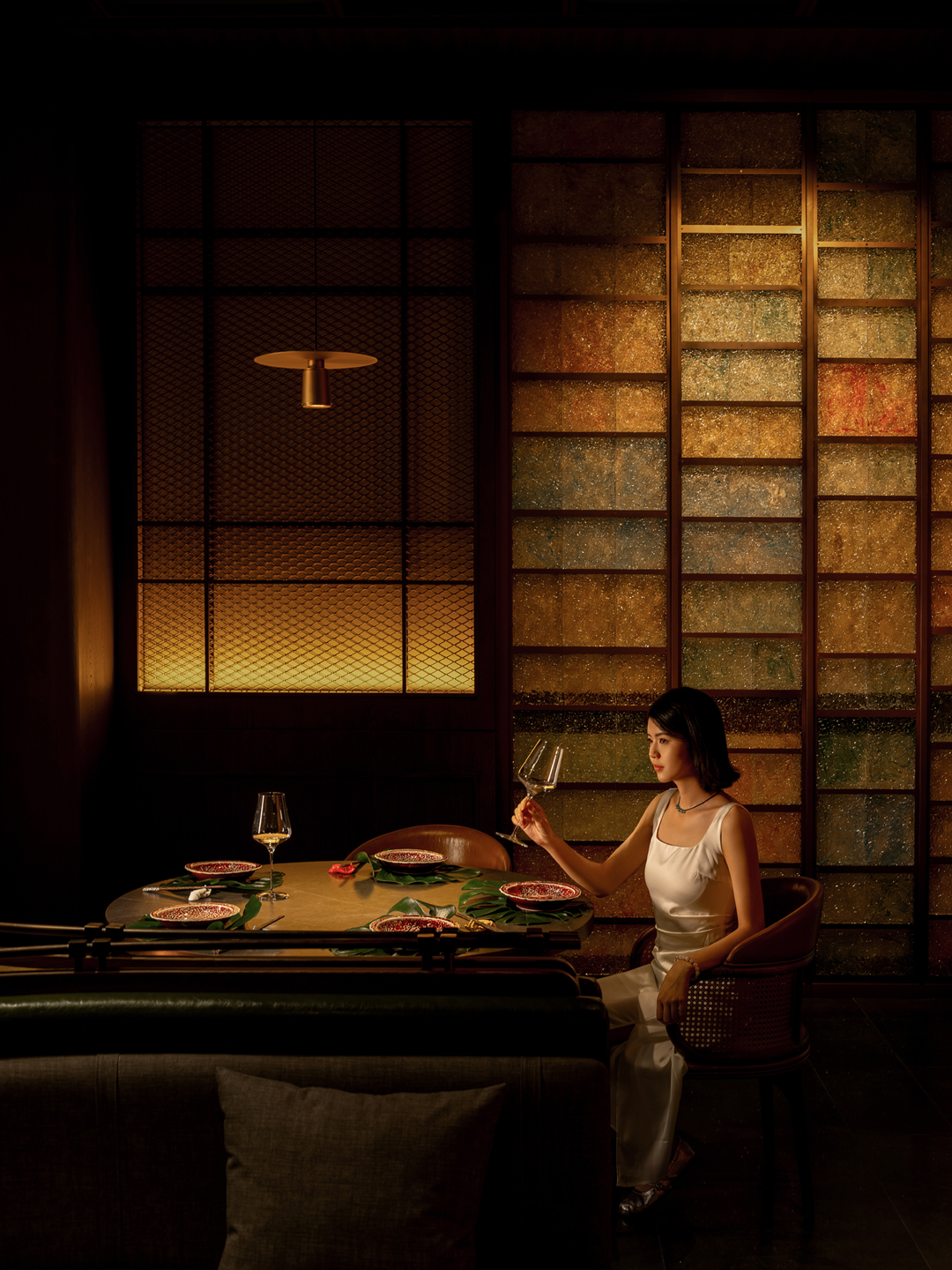Kengo Kuma on Japanese architecture and furniture design Kengo Kuma谈日本建筑和家具设计
2019-08-29 14:27
‘Kengo Kuma: Furniture that blends into the surroundings’ on view at Time Style’s Amsterdam showroom. Photography: Ayako Nishibori
In contrast to Western culture, furniture does not have much of a presence in traditional Japanese architecture and is extremely understated. At a recent exhibition jointly curated by Kengo Kuma and his long-term collaborator Time - Style, held in the manufacturer’s Amsterdam showroom, the architect explains, ‘The transparent nature of traditional Japanese architecture avoids heavy walls and uses slim pillars to support roofs, under which is an open-plan space. Paper-covered sliding windows called shoji act as walls, and even then these are often left open. Similarly, thin sliding doors divide interior spaces.’
与西方文化不同,家具在传统的日本建筑中并没有太多的存在,而且非常低调。在最近的展览中,KengoKuma和他的长期合作者时间
Bringing large objects into such spaces would destroy the ambience and also the natural ventilation. From a cultural perspective, the Japanese traditionally sit directly on a tatami (a type of mat used as a flooring material) or on thin cushions called zabuton, and dine on small, low, single-person, tray-like tables called meimeizen. So ‘chair’ and ‘table’ in the conventional Western sense are not necessary to begin with and instead the Japanese opt for sophisticated, minimalist – and small-scale – furniture.
将大型物体带入这样的空间会破坏环境,也会破坏自然通风。从文化角度来看,日本人传统上直接坐在一张纹身(一种用作地板材料的垫子)上,或坐在名为扎布顿的薄垫子上,然后在小型、低矮、单人区、托盘状的桌子上用餐,这种桌子被称为梅梅森(Meimeizen)。因此,传统西方意义上的“椅子”和“桌子”并不是必要的,取而代之的是日本人选择了精致、简约和小尺寸的家具。
GC Chair for GC Prostho Museum Research Center, Japan
GCProstho博物馆研究中心主席,日本。
The conversation between Kuma and Time - Style began ten years ago, when the architect was designing the Nezu Museum in Minato City in Tokyo. ‘It surprised me that such a garden still existed in the very centre of the metropolis. So, the point was how to create a museum that would do justice to the lush greenery. My intention was to make the building and its furniture as light as a breeze, where people could feel the nature from the inside,’ recalls Kuma. The resulting NC chair illustrates the simplest form a chair could have – the backrest of the thin, flat seat has a graceful curve and the inside of the four thin legs are chamfered to accentuate the chair’s softness. The structural challenges of such delicate fabric were overcome by the artisans using Japanese traditional joinery techniques that build strength within the material.
库马和时代的对话
The design of the GC Prostho Museum and Research Center in Aichi Prefecture was inspired by cidori, an old Japanese toy made of wooden sticks, and built with 6,000 pieces of cypress wood using joinery skills to create a space encased in three-dimensional wooden open grids. The accompanying stackable wooden GC chair follows the same philosophy of lightweight design with just one crest rail. ‘I want my design to be light and delicate. Such elegant pieces are content to play a supporting role and never attempt to steal the spotlight. The starring roles are performed by our human bodies or by the food or drinks we place on the table. To respect and complement these living entities, furniture should be as understated as possible,’ says Kuma.
爱知县GC Prostho博物馆和研究中心的设计灵感来自日本木棍制造的旧玩具CIDori,该玩具用6000件柏木制作,利用细木工技术创造出一个三维空间。伴随的堆叠木制GC椅子遵循同样的轻量级设计理念,只有一顶栏杆。我希望我的设计要轻巧细腻。这些优雅的作品满足于扮演配角的角色,从不试图窃取聚光灯。主演角色是由我们的人体或我们放在桌子上的食物或饮料来完成的。库马说:“为了尊重和补充这些生物,家具应该尽可能少说。”
NC Chair for Nezu Museum, Japan
日本尼竹博物馆NC椅
The FU sofa is a contemporary manifestation of the traditional zabuton. ‘A conventional sofa is usually made of a box-shaped base covered in fabric. This gives it an unnatural volume compared to zabuton. Since my childhood, I’ve had zabuton cushions that could support the entire body with their softness and I wanted to bring that sensitivity into contemporary furniture,’ he adds. The same thinking is evident in the MA sofa, in the shape of a rolled-up shikibuton (Japanese traditional mattress) that was originally designed for the private villa owned by the Whitestone Gallery, which sits on slope in a forest overlooking Mount Asama in Nagano. ‘If we start to be particular about a zabuton, we need to consider the hardness of the inner cushion and variations in the fabrics for each season. However, I felt that the most important part was the stitching on the edge in the same way as we choose our clothing.’
“福沙发”是传统扎布顿的当代表现。“传统沙发通常是由面料覆盖的箱形基础制成的。与扎布顿相比,这给了它一个不自然的体积。从我的童年起,我吃了扎布顿垫,可以用柔软的方法支撑整个身体,我想把这一敏感度带到当代的家具上。”他补充道。在马沙发上,同样的想法是显而易见的,它的形状是由白石画廊(WhitestoneGallery)所拥有的卷起的石屑顿(日本传统床垫)的形状,它坐落在一个可俯瞰Nagano的Asama的森林中的斜坡上。“如果我们开始特别是关于扎布顿,我们需要考虑每个季节的内垫的硬度和织物的变化。然而,我觉得最重要的部分是用与我们选择衣服一样的方式在边上缝合。”
Kuma’s continuous exploration and reinterpretation of traditional lifestyle, values and craftsmanship pave the way for contemporary Japanese furniture to be appreciated internationally. ‘My objective is to design modern furniture as an extension of the innovations in traditional Japanese furniture that have been honed over the centuries. I believe that people today need furniture of this nature and modern transparent spaces.’ §
久马对传统生活方式、价值观和工艺的不断探索和重新诠释,为当代日本家具的国际欣赏铺平了道路。我的目标是设计现代家具,作为几个世纪来日本传统家具创新的延伸。我相信今天的人们需要这种性质的家具和现代透明的空间。
 举报
举报
别默默的看了,快登录帮我评论一下吧!:)
注册
登录
更多评论
相关文章
-

描边风设计中,最容易犯的8种问题分析
2018年走过了四分之一,LOGO设计趋势也清晰了LOGO设计
-

描边风设计中,最容易犯的8种问题分析
2018年走过了四分之一,LOGO设计趋势也清晰了LOGO设计
-

描边风设计中,最容易犯的8种问题分析
2018年走过了四分之一,LOGO设计趋势也清晰了LOGO设计






























